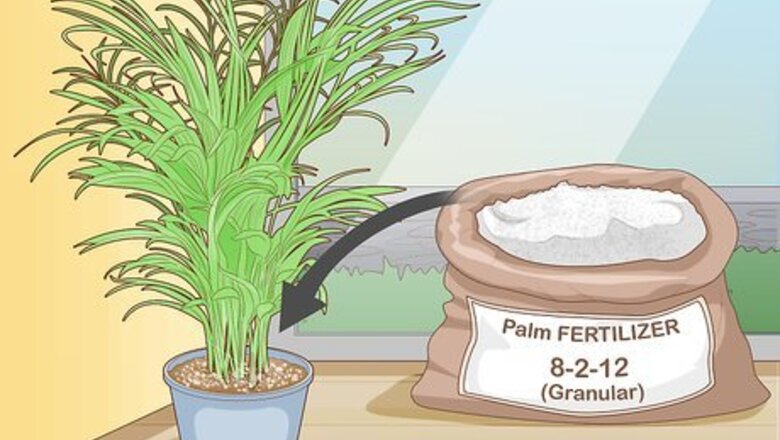
views
Fertilizing to Increase Growth
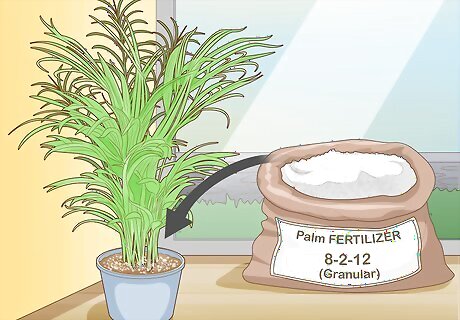
Purchase a granular fertilizer designed for palms. A granular fertilizer comes in the form of small pellets instead of a liquid and can be found at your local garden or home improvement store. While a regular plant fertilizer works well, look for one labeled as "Palm Fertilizer," "Palm & Ornamental," or "Fern & Palm" to help your areca palm grow faster. After you measure out and apply the fertilizer according to the instructions, water the palm thoroughly. An 8-2-12 palm fertilizer is popular because it releases the important micronutrients slowly into the soil. The instructions that come on the packaging will tell you how much of the fertilizer to use, depending on the size of your palm and the brand of fertilizer. Watering the palm right after fertilizing it helps to activate the fertilizer.
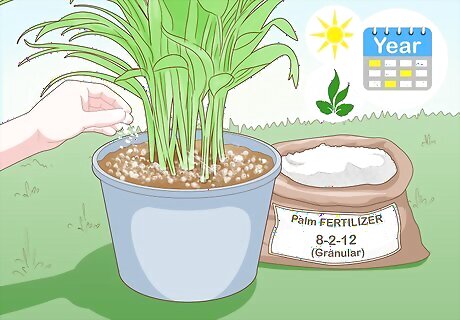
Apply fertilizer to the palm during spring and summer months only. This is the recommended time to fertilize the palm as it’s the best growing season. Plan to fertilize your palm 3 times a year, spreading them out throughout the spring and summer months for the best results. Apply the fertilizer to the top of the soil and water it to help the fertilizer soak down beneath the top layer. How much fertilizer you use will depend on the size of your areca palm as well as the specific type of fertilizer you purchased. Look at the instructions on the fertilizer bag to follow the precise measurements.
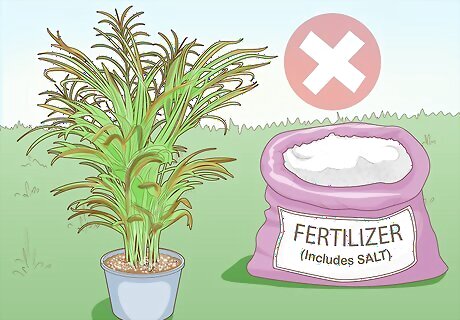
Experiment with different fertilizers to find the one that works best. The first fertilizer you use on your palm may not be the best one for it. If your palm doesn’t seem to be reacting well to the fertilizer–maybe its leaves have spots or the tips are turning brown–then try a different one out to see if it works better. Keep in mind that areca palms don’t grow well in salt, so avoid fertilizers that have salt listed as a main ingredient.
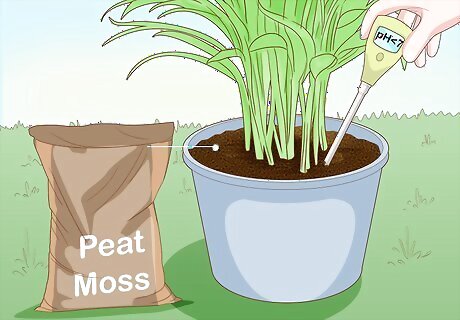
Add organic peat moss to the palm’s soil to give it important nutrients. Areca palms like acidic soil and should have soil with a pH of 7 or below. To ensure the best soil conditions, add peat moss to the soil. This will increase the acidity in the soil to help your areca palm grow. Look for organic peat moss at your local gardening or home improvement store.
Keeping the Palm Healthy

Place the areca palm in bright, indirect sunlight. While areca palms don’t like harsh direct light, they do thrive in bright indirect sunlight. Place your indoor palm near a window so it gets lots of morning sunlight if possible. This is the best type of light for it to grow because morning light is more gentle than the afternoon light. Place your palm near an east-facing window if possible. Aim to give your palm at least 3-4 hours of morning sunlight.
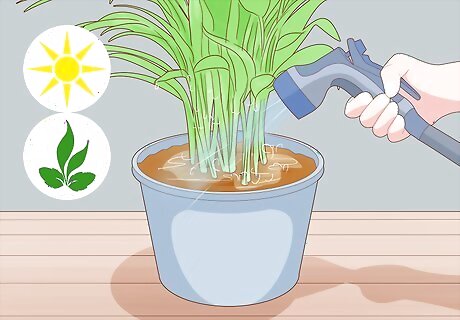
Water the palm more frequently in the spring and summer. The spring and summer are when the palm tends to dry out more quickly and needs more water to continue growing well. Touch the soil between waterings and if the top layer is dry, it’s time to add more water. Make sure your areca palm has proper drainage because it doesn’t do well if its roots are sitting in water.

Let the palm dry out before watering it during the fall and winter months. Your areca palm doesn’t need to be watered as frequently when the weather gets chillier. It’s best to let the plant dry out before adding more water so it doesn’t trap moisture. Touch the soil, and if the top 2 inches (5.1 cm) feel damp, it doesn’t need to be watered yet. Your palm likely doesn’t need to be watered more than twice a week in the winter months.

Keep the indoor temperature between 60 °F (16 °C) and 75 °F (24 °C). Areca palms like warmer temperatures, but as long as your home is above 60 °F (16 °C), it will grow. Check your thermostat, especially during colder months, to ensure the environment is warm enough. If the temperature drops suddenly, the palm’s leaves may develop brown spots or the tips might turn brown as well. Areca palms will thrive in more humid conditions, so try using a humidifier next to your palm or spritzing it with water.

Plant the palm outdoors if you live in a warm climate. If you happen to live in a warm climate, such as a Zone 10 or higher, your areca palm can be planted outdoors. Follow the same care instructions as you would if it were indoors, making sure it gets enough water and has access to indirect sunlight. If you'd like your palm to live indoors, consider planting it outside and then repotting it when it grows larger to bring inside. An areca palm that’s outdoors in the right conditions will grow faster than one indoors. Planting an areca palm outdoors in colder temperatures can cause the palm to die.












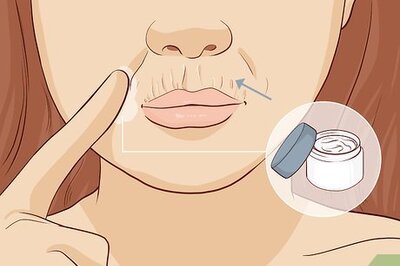





Comments
0 comment